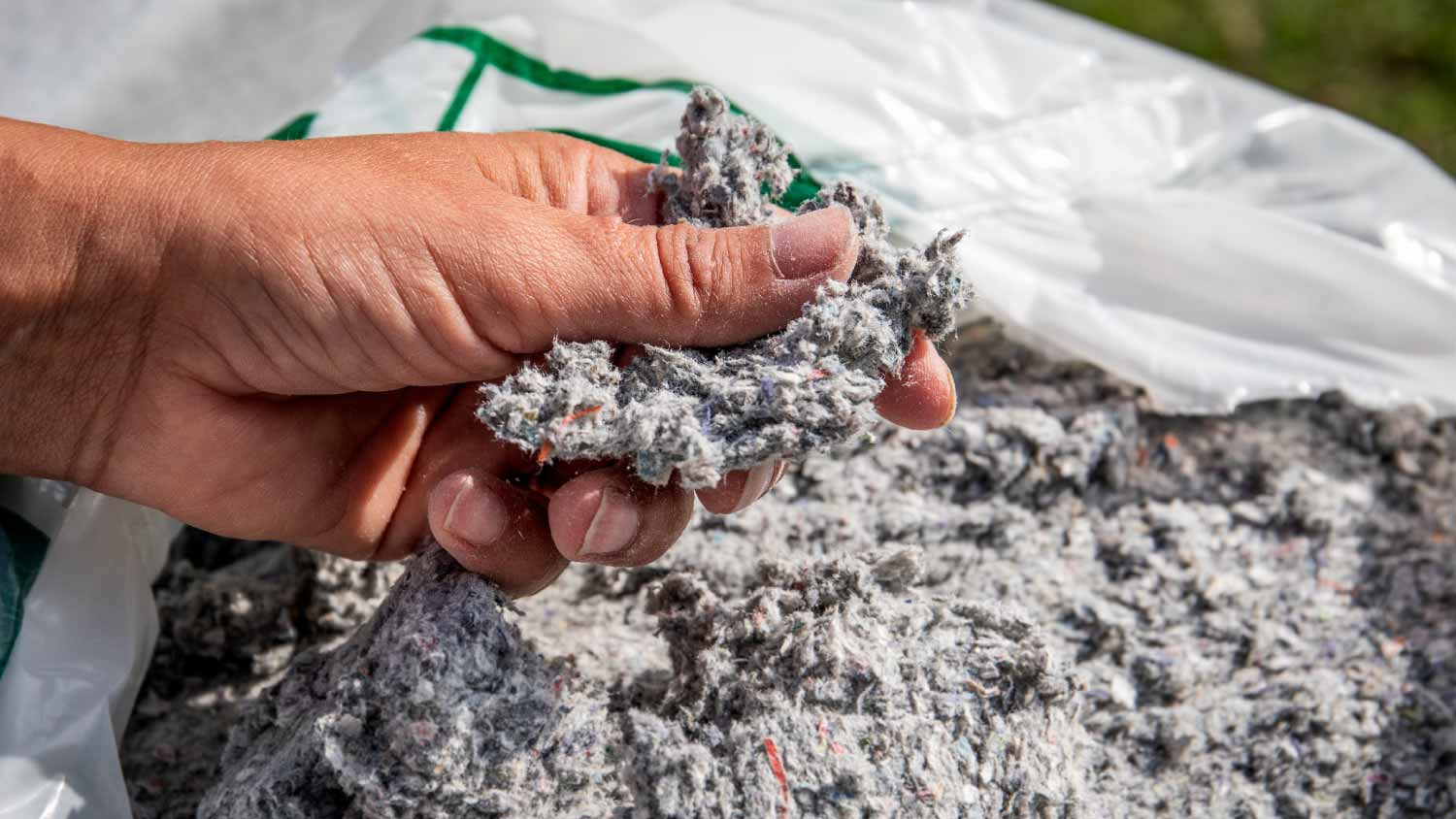The Pros and Cons of Cellulose Insulation
Consider this eco-friendly insulation option to keep heat in your home


Because it is blown-in, cellulose is an excellent choice to add insulation in difficult-to-reach areas.
Cellulose insulation is considered cost-effective, ranging from $0.60 to $2.30 per square foot.
Unfortunately, cellulose insulation settles easily, which can leave gaps that allow cold or warm air in your home.
Proper home insulation is critical, ensuring that your home doesn’t lose heat when the temperature drops. There are many insulation material options on the market, each with its own pros and cons. Cellulose insulation is gaining popularity as an eco-friendly and effective solution for keeping homes comfortable and energy-efficient. Its rise to prominence can be attributed to its numerous advantages, including its excellent R-value and ability to be installed in difficult-to-reach places. However, like any material, cellulose insulation comes with its own set of drawbacks. In this article, we will delve into the pros and cons of cellulose insulation to help you make an informed decision about whether it's the right choice for your home.
What is Cellulose Insulation?
Blown-in cellulose insulation is insulation made from recycled, organic materials, such as paper, cardboard, and wood. These materials are hybridized and densely packed to prevent airflow and keep your home warm in the winter and cool in the summer. In addition, cellulose insulation is treated with non-hazardous chemicals, such as borax, to repel insects and fire.
The Advantages of Choosing Cellulose for Your Home’s Insulation

Cellulose insulation is known for being versatile, affordable, and eco-friendly. It’s a great choice for those who need to insulate existing walls, as it doesn’t require the walls to be torn down and replaced. Read on to learn the additional pros of installing cellulose insulation.
It’s Flexible
Got an old house with tons of nooks, crannies, and corners? Cellulose insulation can be a real lifesaver; it is blown-in, and thus able to settle into any shape in your walls and attic. If you need insulation in an already-finished wall, it’s likely that your only option will be loose-fill insulation—otherwise, you’d need to remove the drywall, add the insulation, and then replace the drywall.
Excellent R-value
Cellulose has a high R-value, which means that it has powerful insulating properties. Cellulose’s R-value is around 3.2 to 3.8 per inch. A layer of eight to nine inches thick has an R-value of about 30; you’d require 12 inches to achieve the same R-value with fiberglass.
Eco-friendly Option
If you’re worried about the environmental footprint of your home building materials, you will sleep easy after installing cellulose insulation. It’s mostly (70%-80%) made from recycled paper, cardboard, and wood products, minimizing its carbon footprint.
Fire Resistant
You might be concerned about having paper-based insulation, but cellulose is treated with boric acid and borax to ensure it is fire-resistant. In fact, cellulose insulation is one of the few insulation materials that has a Class 1 Fire Rating—this means that, in the case of fire, flames would spread slower than with other materials.
It’s Affordable
As it is made with recycled materials, cellulose is affordable. On average, cellulose insulation costs $0.60 to $2.30 per square foot.
The Downsides of Cellulose Insulation
Before deciding on cellulose insulation for your home, make sure you understand its drawbacks.
Settles Easily
One of cellulose’s pros can also be a con: the material’s ability to fill and settle into any area means it settles and compacts more easily. This can leave gaps at the top of spaces, allowing for cold or warm air to escape your home.
Moisture Magnet
Cellulose soaks up any moisture it comes in contact with, and takes a long time to dry; this can lead to mold and mildew problems. In addition, damp or wet insulation has a lower R-value, making it much less effective at preventing air transfer.
Installation Issues
Blown-in insulation requires special machinery, so if you’re planning to DIY the blown-in insulation, expect to rent a blower. In addition, cellulose insulation can be messy to install, leaving behind a lot of dust, so be prepared for a lengthier cleanup process than you would with batt and roll insulation. Unless you are experienced in this type of project, it’s always best to consult with a local insulation installation professional to ensure the job is done right the first time.
Frequently Asked Questions
Unless your cellulose insulation is wet, moldy, or showing signs of mildew or pests, there’s no need to remove it before adding new insulation on top of it. Inspect your insulation thoroughly before adding the new insulation, and if you’re unsure how to assess the presence of mold or mildew, talk to a mold remediation specialist near you.
The lifespan of cellulose insulation is 20 to 30 years, on average. That said, it’s important to start checking your insulation after year 10 to check for degradation, mold, mildew, and other potential problems. Every 10 years, you should also confirm your home’s insulation is in line with updated local building codes.
There are two reasons why cellulose insulation repels rodents (and insects). First, the insulation has been treated with boric acid, which is a natural pest-repellent. In addition, the loose-fill style of cellulose creates less-than-ideal conditions for mice and other rodents to nest and burrow, helping to keep them at bay.




- What’s the Difference Between Cellulose and Fiberglass Insulation?
- What Type of Insulation Is Best for My Home?
- Buyer’s Guide on How to Choose Insulation for Your Home
- What Is Insulation and Why Do You Need It for Your Home?
- How to Remove Fiberglass Insulation
- Should You Insulate Interior Walls? 4 Reasons to Consider
- How to Better Insulate Your Home: Try These 10 Tips
- Is Pipe Insulation Worth It?
- How to Install Spray Foam Insulation Like a Pro
- What Is Asbestos Insulation and How to Spot It











